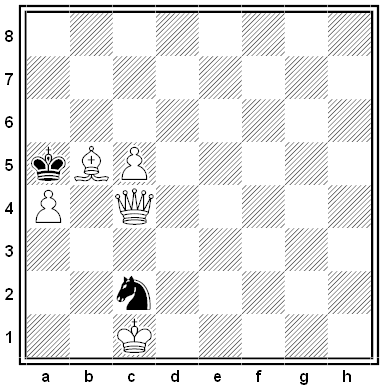Month: January 2014
Pitching In
At a timber-mill in the Powelltown district (Victoria) it is customary to blow three blasts of the whistle to indicate an accident and six blasts to notify a fatality. One day the six blasts echoed about the hills and men ran from all directions to the mill. But there was no fatality; the ‘whistle’ was produced by a Lyrebird, which had heard the three blasts with some frequency, and, in imitating them, had added three more for good measure. That episode ranks with one related by Mervyn Bill, a forest surveyor, who has written that when he was camped at Hell’s Gates (Victoria), he was annoyed to see, through the theodolite telescope, his men doing certain field operations without the usual instructions. The fact became revealed, subsequently, that they had obeyed ‘instructions’ from a Lyrebird in an adjacent gully, which faultlessly imitated the surveyor’s shrill, staccato code of signals.
— Alec H. Chisholm, Bird Wonders of Australia, 1958
See Technical Fowl.
Digit Jump

Place the digits 1 through 8 into these circles so that no two successive numbers are connected by a line. If we don’t count rotations or reflections, the solution is unique.
In a Word
monomachy
n. a duel
In 1842, Abraham Lincoln, then an Illinois lawyer, published a letter in a Springfield newspaper criticizing the performance of the state’s auditor, James Shields. Shields, quick to anger, challenged Lincoln to a duel, and the two met on an island in the Mississippi River. As the challenged party, Lincoln was permitted to choose the weapon, and he requested long cavalry broadswords. As he stood 7 inches taller than Shields, this gave him an enormous advantage, which he demonstrated by cutting a branch above Shields’ head. Accounts differ as to how the auditor responded — he either laughed or quailed — but the two agreed not to fight. Lincoln appears to have been embarrassed by the whole affair, and declined to discuss it in later years.
(Thanks, Aric.)
The Wheel Cipher
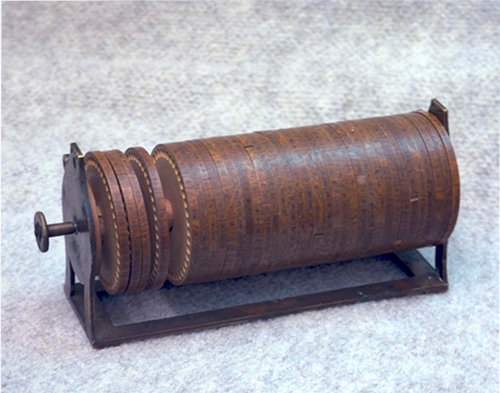
Thomas Jefferson, already absurdly accomplished by 1795, somehow found time to delve into cryptography, where he devised this cipher system. The letters of the alphabet are printed along the rim of each of 36 disks, which are stacked on an axle. One party rotates the disks until his message can be read along one of the 26 rows of letters, somewhat like a modern cylindrical bike lock. Now he can record the letters in any one of the other 25 rows and send that string safely to another party, who decodes it by reversing this procedure. If the message is intercepted, it’s useless even to someone who has the disks, because he must also know the order in which to stack them, and 36 disks can be stacked in 371,993,326,789,901,217,467,999,448,150,835, 200,000,000 different ways.
This is pretty robust. The cipher below, created in 1915 by U.S. Army cryptographer Joseph Mauborgne, has never been solved. “The known systems from this year (or earlier) shouldn’t be too hard to crack with modern attacks and technology,” writes NSA cryptologist Craig P. Bauer. “So, why don’t we have a plaintext yet? My best guess is that it used a cipher wheel” like Jefferson’s.

(L. Kruh, “A 77-year-old challenge cipher,” Cryptologia, 17(2), 172-174, 1993, quoted in Bauer’s Secret History: The Story of Cryptology, 2013.)
Through the Motions
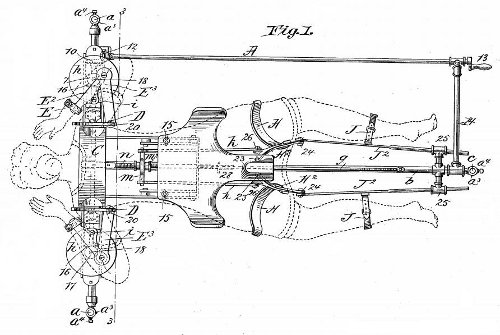
This “device for teaching swimming,” patented by James Emerson in 1896, teaches good technique mechanically. The teacher places the machine in a swimming pool or open water, the student climbs aboard, the teacher turns crank handle 13, and the machine guides the student through the motions of swimming, “these arm movements being so nearly like those performed by an actual swimmer that the beginner who has these movements mechanically imparted to her arms thereby shortly acquires the swimming arm stroke.” What could go wrong?
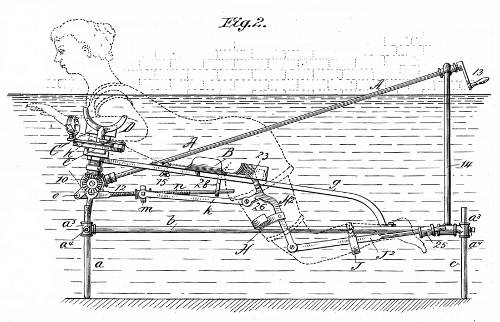
Occupational Hazards
In April 1964, British prime minister Alec Douglas-Home was staying at the home of a friend in Scotland. One day when he happened to be alone there, he answered the door to find a group of students from Aberdeen University, who said they were there to kidnap him.
At first Douglas-Home said, “I suppose you realize if you do, the Conservatives will win the election by 200 or 300.” Then he stalled by asking for 10 minutes to pack a few things, and bought further time by offering beer to the students. Eventually his friends returned and the students departed willingly. Douglas-Home never spoke publicly of the incident, as the breach would have imperiled his bodyguard’s career, but in 1977 he mentioned it to a colleague, whose diary entry came to light in 2008.
Related: Australian prime minister Harold Holt disappeared entirely in 1967. He was visiting Cheviot Beach, near Portsea, with friends when he decided to go swimming. When he disappeared from view a search was organized, but it could find no trace of him. The beach is known for its rip tides, so he’s presumed to have drowned, but no body has ever been found.
(Thanks, John.)
Accord

Squeeze six circles into a larger circle so that each is tangent to its two neighbors. Now the three lines drawn through opposite points of tangency will pass through the same point.
Remarkably, this wasn’t discovered until 1974.
Lost Hope

A gruesome detail from the siege of Leningrad, from the diary of ballet teacher Vera Sergeevna Kostrovitskaia, April 1942:
And there, across from the entrance to the Philharmonic, by the square, there is a large lamppost.
With his back to the post, a man sits on the snow, tall, wrapped in rags, over his shoulders a knapsack. He is all huddled up against the post. Apparently he was on his way to the Finland Station, got tired, and sat down. For two weeks while I was going back and forth to the hospital, he ‘sat’
- without his knapsack
- without his rags
- in his underwear
- naked
- a skeleton with ripped-out entrails
They took him away in May.
That’s from Cynthia Simmons and Nina Perlina, Writing the Siege of Leningrad, 2002. They add, “The man was apparently heading for the Finland Station in the hope of getting out of Leningrad on Lake Ladoga, the ‘Road of Life.'”
Housewife Sof’ia Nikolaevna Buriakova remembered, “Having grown numb from work, having lost a sense of what was permissible, the gravediggers stooped to all sorts of disgusting jokes, even blatantly violating the deceased. On the road leading to the communal grave a tall corpse had been stood with a cigarette sticking out of his mouth. His frozen, iced-over arm pointed the way to the trench graves.”
Good Boy
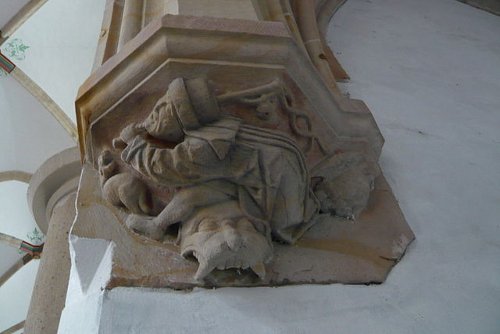
An epitaph in the Pine Forest cemetery in Wilmington, N.C., reads:
“JIP” JONES
BORN SEPT. 24, 1894
DIED MAY 18, 1904
THIS WAS THE ONLY DOG WE EVER KNEW
THAT ATTENDED CHURCH EVERY SUNDAY
Actually, dogs commonly attended services in former times. Indeed, until the 19th century, they could be so numerous that churches employed “dog whippers” to remove unruly dogs during services. The Great Church of St. Bavo in Haarlem, the Netherlands, contains a carving of the hondenslager at work (above).
The 18th-century zoologist Carl Linnaeus used to attend mass with his dog Pompe. Linnaeus always left after an hour, regardless of whether the sermon was finished. It’s said that when he was sick Pompe would arrive at the service alone, stay for the customary hour, and depart.
“Heaven goes by favor,” wrote Mark Twain. “If it went by merit, you would stay out and your dog would go in.”

